The monastery is situated in the Spiti valley (an isolated valley with a total population of 10,000) above Tabo village on the left bank of the Spiti River. The valley as such is delimited by Ladakh in the north, Lahaul and Kullu districts in the west and south-east respectively, and by Tibet and the Kinnaur district in the east. While Tabo village is in a bowl-shaped flat valley, the monastery is also in the bottom of the valley, unlike other monasteries in the valley, which are perched on hills; in the past the region was part of Tibet.It is located in a very arid, cold and rocky area at an altitude of 3,050 metres (10,010 ft). Above the monastery there are a number of caves carved into the cliff face and used by monks for meditation.There is also an assembly hall in the caves and some faded paintings on the rock face.
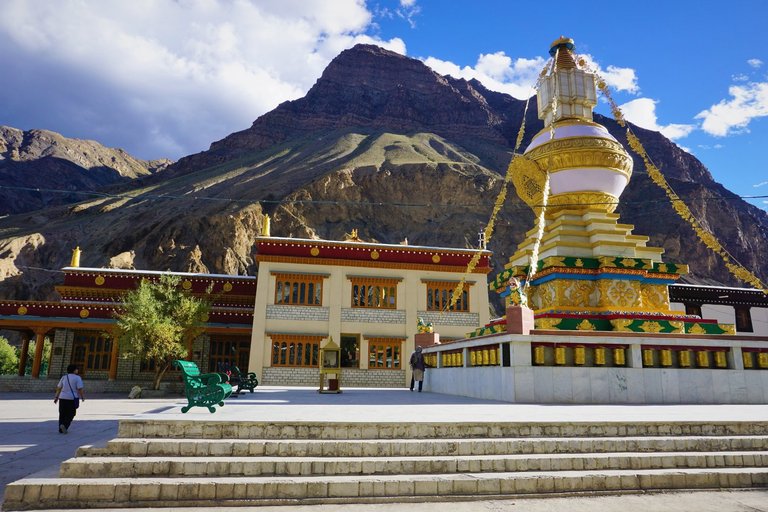
Tabo Monastery was founded by the buddhist king (and royal lama) Yeshe O'd in 996 A.D. A renovation inscription says it was renovated 46 years later by Yeshe O'd's grandnephew, the royal priest Jangchub O'd. These royal patrons, the kings of the Purang-Guge kingdom, were descended from the ancient Tibetan monarchy. Their ancestors migrated to west Tibet in the 10th century. By the end of the 10th century their territory stretched from Ladakh to Purang and included all of western Tibet (ancient Zhang Zhung). Successive members of this dynasty built many monasteries along the trade routes linking the far corners of their kingdom.

The intimate connection between trade and religious establishments is a well known phenomenon in the history of Indian Buddhism.The kingdom of the kings of Purang-Guge, from Ladakh to Mustang, was connected by a dense network of trade routes facilitated by the strategic placement of a large number of temples directly controlled by the royal family and their noble supporters. Tabo was a 'daughter' monastery of Tholing Monastery in Ngari West Tibet.
The contribution of this dynasty to the re-establishment of Indian Mahayana Buddhism in Tibet was so great it is known as the chi-dar, the second spreading of buddhism and the principal personalities are well recognized in Tibetan history.

They so skillfully integrated political, religious and economic institutions that throughout the 11th century these monasteries were unparalleled for their artistic, literary and philosophical achievements.

The themes of political legitimacy and cultural integration are written large on the walls of the Tabo main temple. An analysis of the names and costumes of the monastic community (in the entry hall on the north wall) and the aristocracy (on the south wall) demonstrates the importance of the local culture at the time Tabo was founded.
The main temple at Tabo was a royal monument and its decorative program was based on the ideology of its patrons : legitimacy, status and piety.
![屏幕快照 2018-04-01 下午3.59.15.png])
在远离拉萨的遥远的西部,也有一些古老的寺院,比如说塔波寺,创建于公元996年,它位于今天的印度西北部的喜马偕尔邦的德斯匹蒂地区,今天在政治上它属于印度,但是在历史上它曾经属于古格王国,并且为王家寺院的所在。在塔波寺发现了许多壁画,绘制的是佛教的神灵,这些神灵的绘制很大程度上是受到了克什米尔风格的影响。除了佛教的画像以外,还有一些世俗的画像,比如说王室的喇嘛说法集会图。
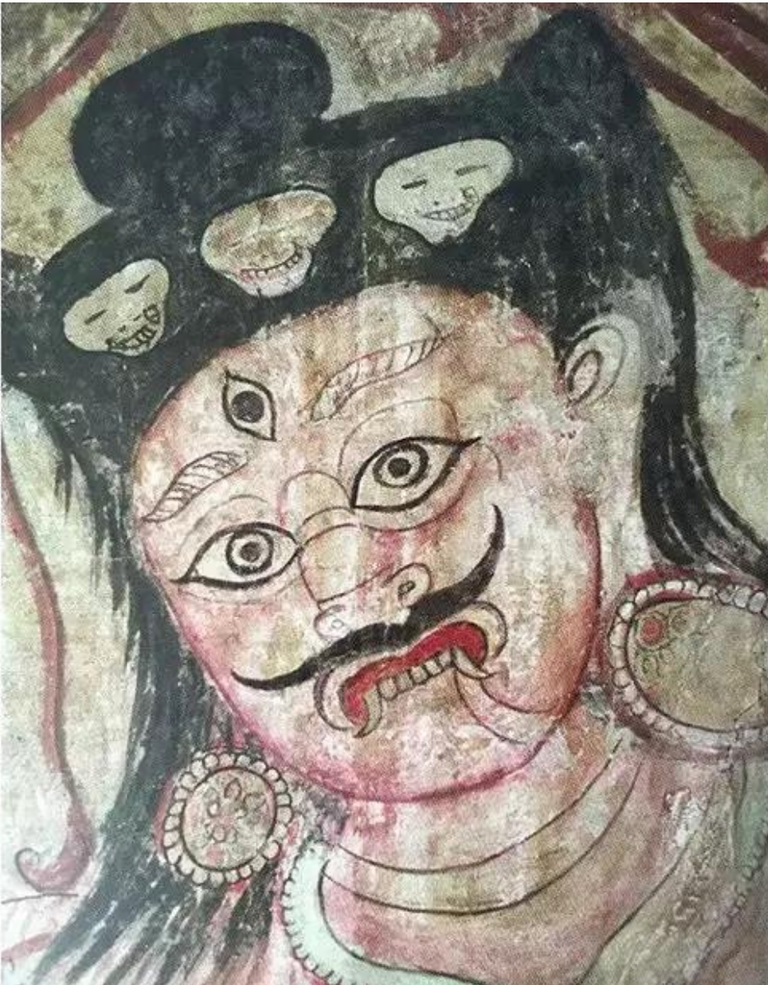![屏幕快照 2018-04-01 下午4.00.11.png])
塔波寺是最古老的寺院之一,位于北喜马拉雅地区,地处斯必提河谷流域,被保存在其原始状态。“据有关资料记载,在塔波寺中心殿堂杜康大殿内经堂的左壁上有一段11行文字的题记,曾由图齐译出:“最初,于火猴年此殿由祖父益希沃建成… …”,相当于公元996年。46年后,由其孙强曲沃在先人思想的启发下重修了此殿(1042年)。
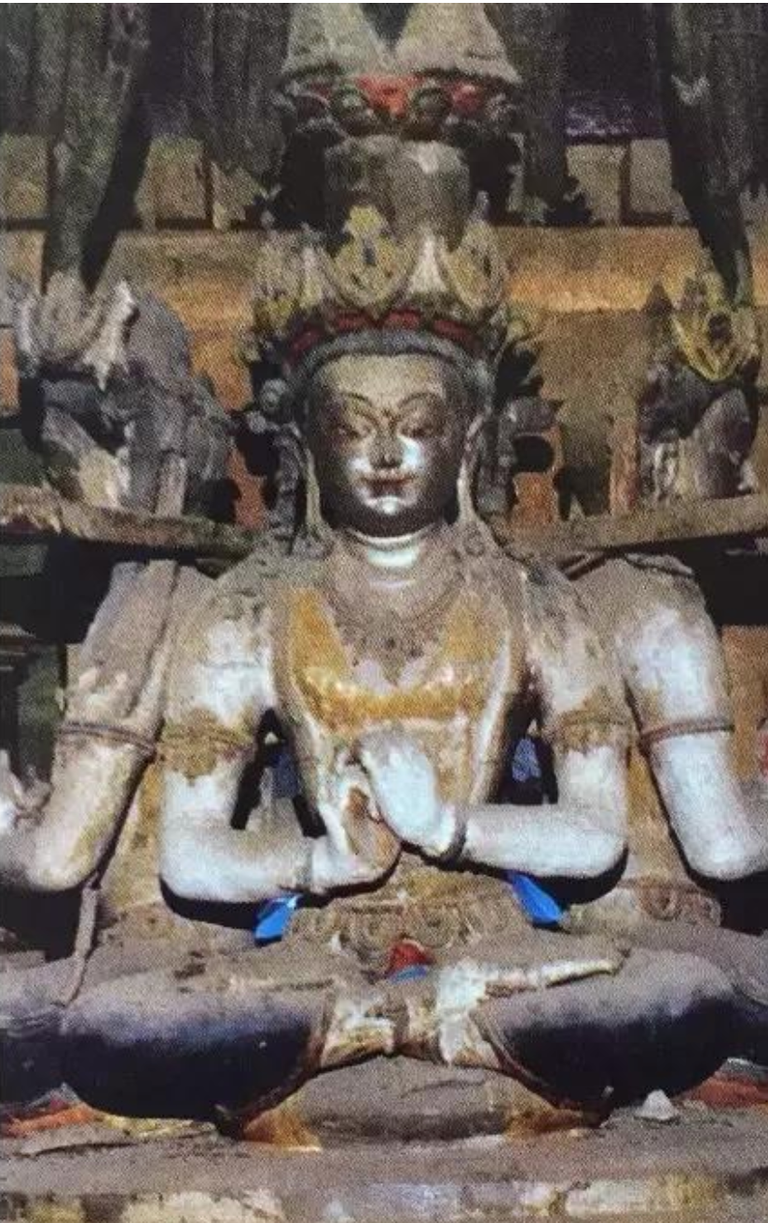![屏幕快照 2018-04-01 下午4.00.22.png])
塔波寺作为后弘期西藏西部佛教文化历史的见证,寺中的雕塑和绘画均可以追溯到一千年前,这些古代印度-西藏的艺术杰作展现出无比细腻的绘画手法和独特的地域风格,代表了当时西藏西部佛教艺术的最高成就。
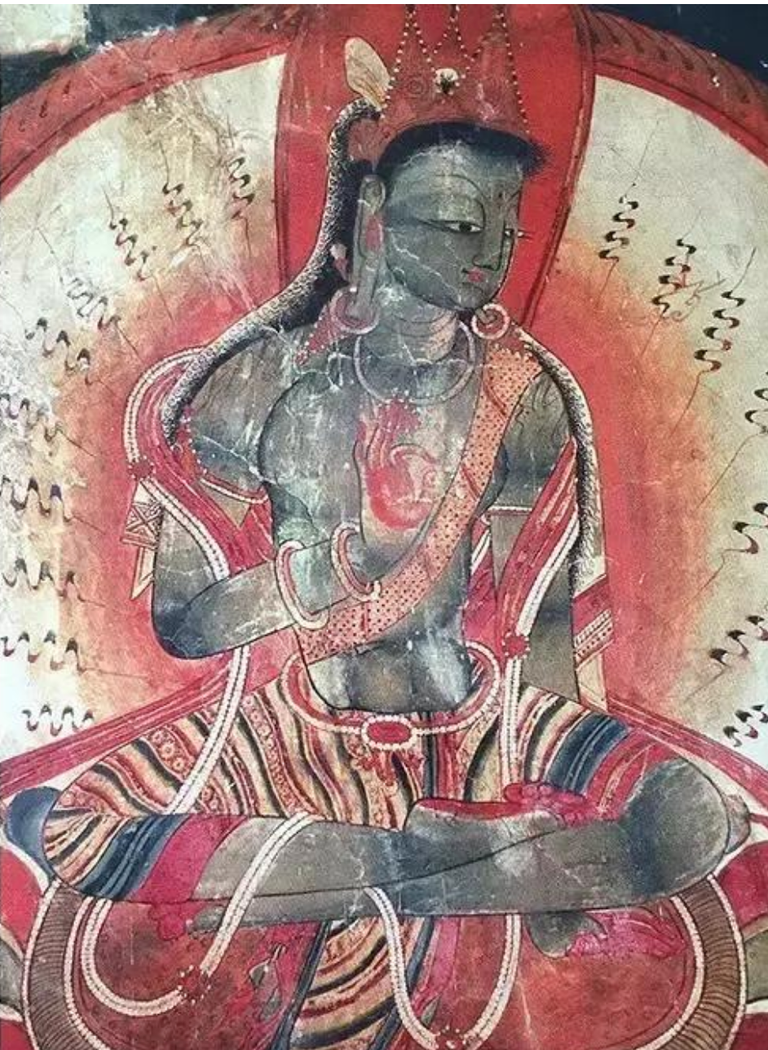![屏幕快照 2018-04-01 下午3.59.22.png])
塔波寺内的壁画、泥塑、天花板中精描细绘了不同主题且设计复杂的纺织品图案,但大部分纺织品主要绘于尊神的长裤与帔帛上,并未显示出西藏本土物产的特征,而是外来的特征。给人有质地轻薄之感,遮体较少,大大迥异于寒冷的喜马拉雅地带居民所穿毛织品的厚重感。
通过对这些佛教遗迹保存的佛教壁画的题材与风格的研究,可以观察后宏期初期这一重要历史时期内的西藏西部佛教艺术发展的一个基本脉络及其背后的文化历史背景。
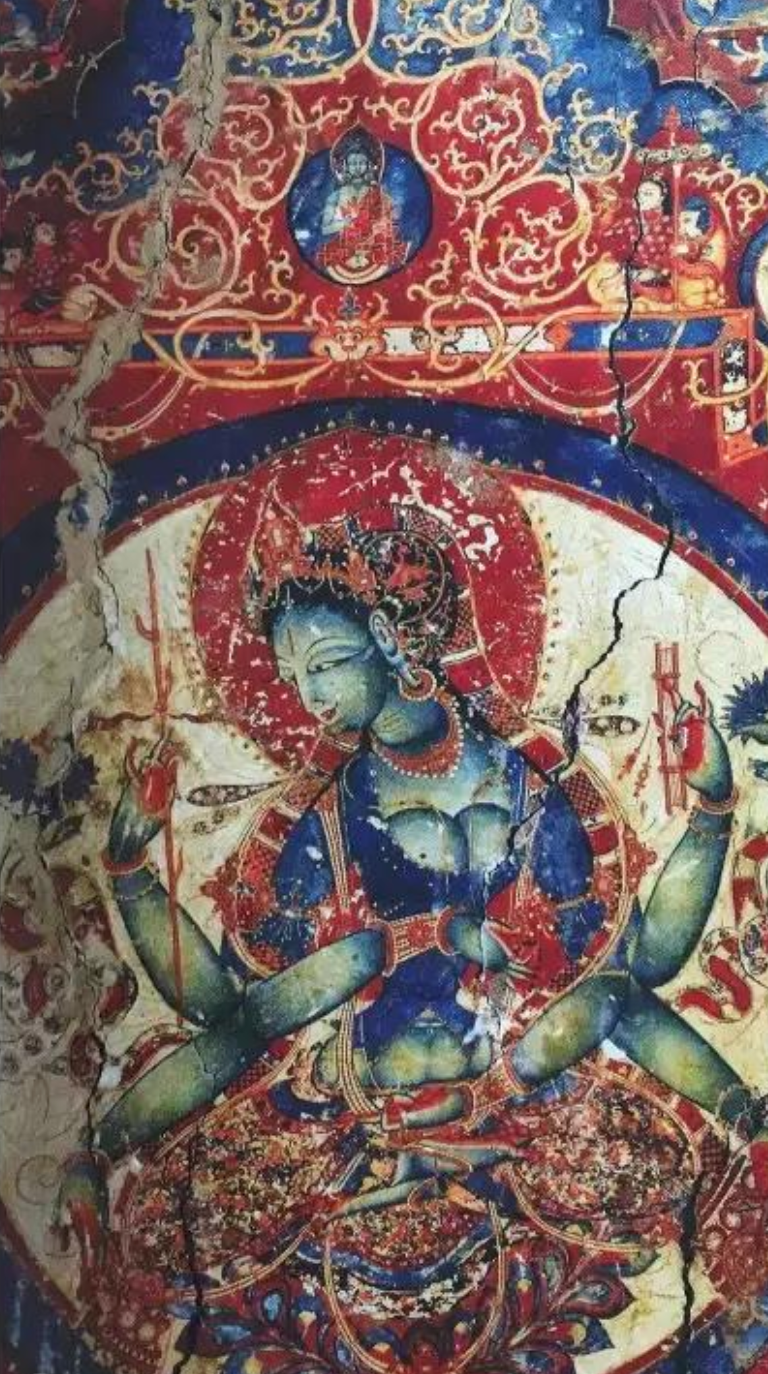)
塔波寺壁画中的菩萨形象之一,在绘画技术水平上与阿基寺壁画不分上下,显示了画家的深厚功力。头光背光有火焰纹,飘带飞舞于身旁。整幅绘画的色调十分和谐宁静,明暗渲染有节制,是古格艺术中来自印度和克什米尔的风格与西藏模式在最初的汇合中生成的艺术原型。
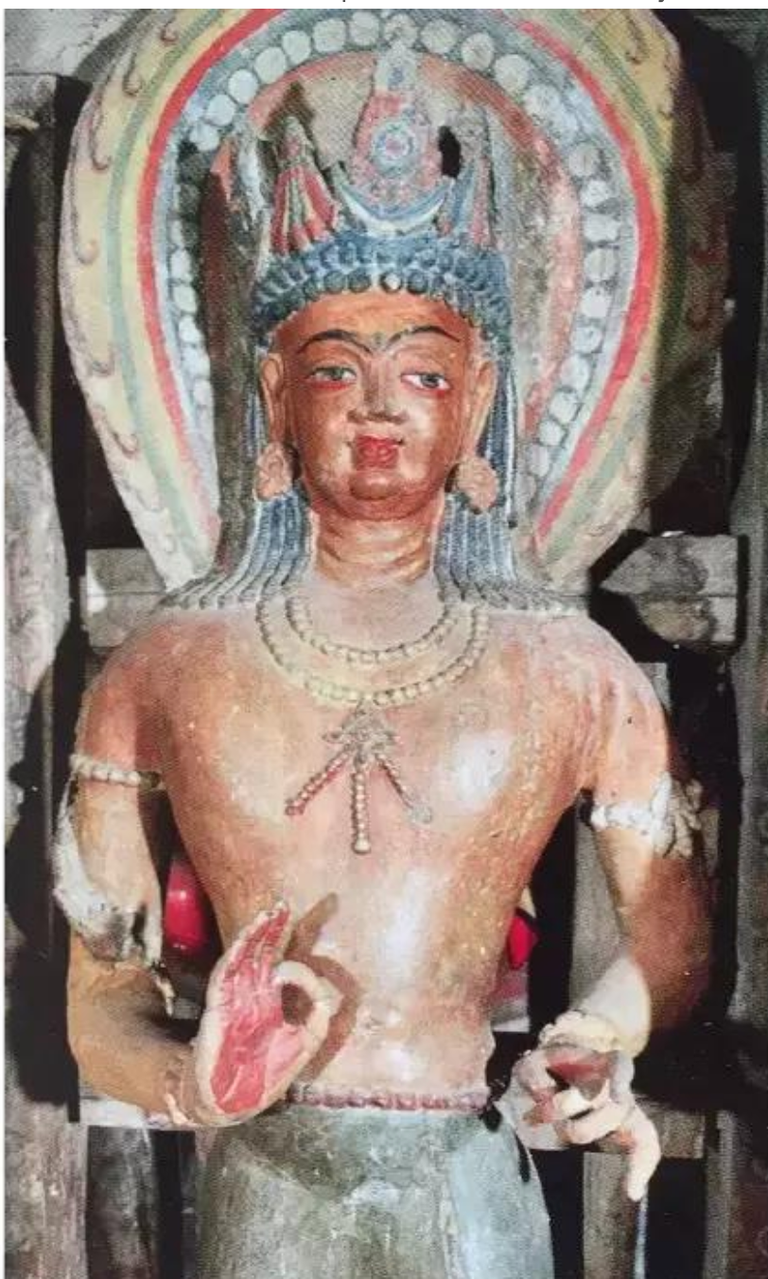)
在10世纪晚期至11世纪阿里诸王创建的第一批寺院中,塔波寺堪称典型,对10至11世纪喀什米尔艺术的传播扮演过重要角色。
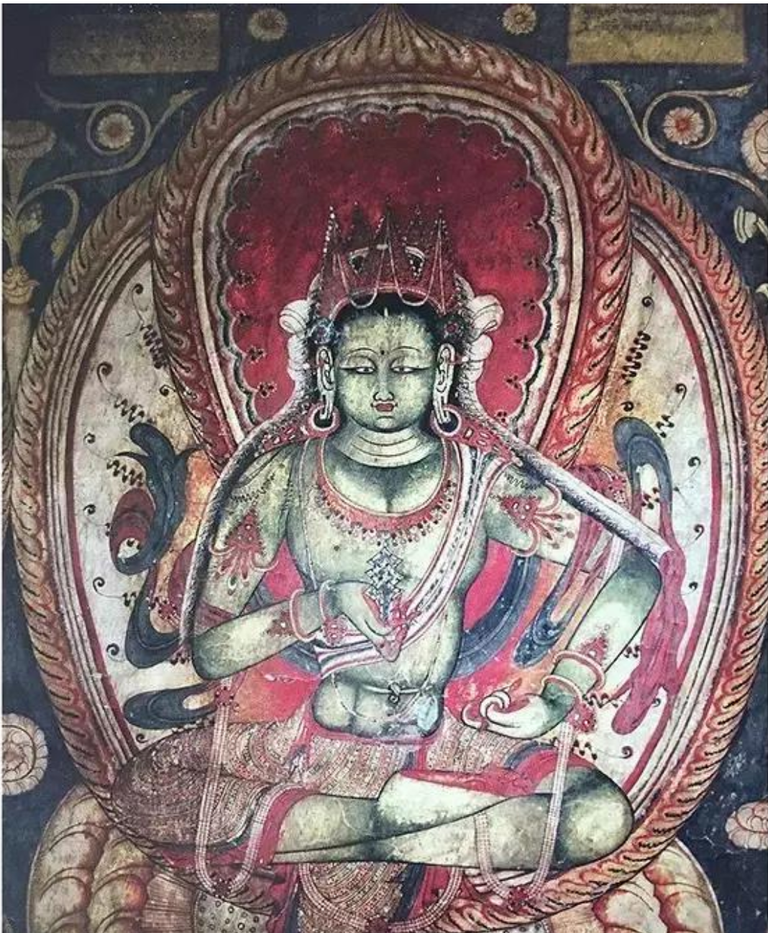![屏幕快照 2018-04-01 下午3.59.52.png])
Hi! I am a robot. I just upvoted you! I found similar content that readers might be interested in:
http://www.tabomonastery.com/tabo-monastery.php
an impressive grand sight